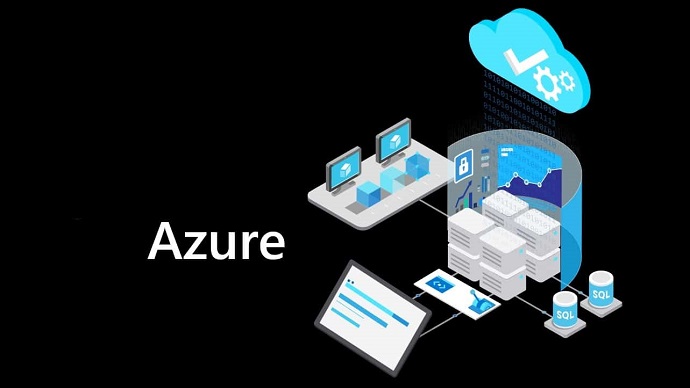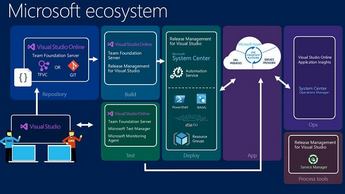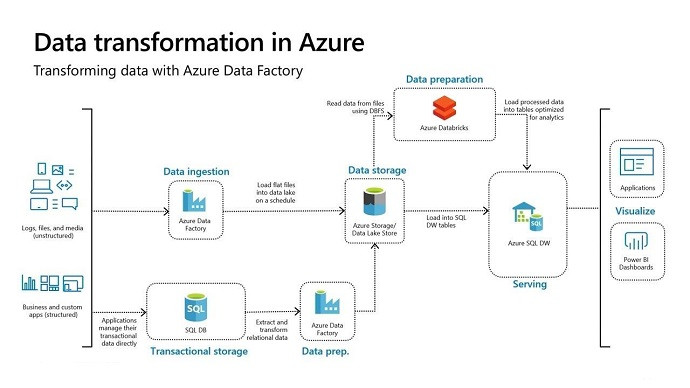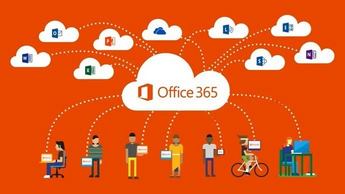
PL-300: Microsoft Power BI Data Analyst
PDFs and exam guides are not so efficient, right? Prepare for your Microsoft examination with our training course. The PL-300 course contains a complete batch of videos that will provide you with profound and thorough knowledge related to Microsoft certification exam. Pass the Microsoft PL-300 test with flying colors.

Curriculum for PL-300 Certification Video Course
| Name of Video | Time |
|---|---|
 1. What are we going to learn? |
4:42 |
 2. Installing Power BI Desktop |
5:21 |
| Name of Video | Time |
|---|---|
 1. Welcome to Part 1: Visualizations |
0:58 |
 2. Importing from Excel, and Creating our first visualization |
5:07 |
 3. Viewing data |
5:36 |
 4. Focus mode and Different visualizations |
3:06 |
 5. Why do I need a Work email address? And how can I get one, if I don't have it? |
6:10 |
 6. Saving visualization to the Desktop and to the Power BI service |
5:09 |
 7. Practice Activity Number 1 - The Solution |
07:23 |
| Name of Video | Time |
|---|---|
 1. The New Format Pane |
2:45 |
 2. Formatting font and font size |
4:53 |
 3. Formatting colors |
5:20 |
 4. Stylistic options |
6:47 |
 5. Position visuals |
5:45 |
 6. Align visuals |
4:34 |
 7. Format Painter |
2:45 |
 8. Configuring summarization, both default and in a specific visualization |
10:01 |
 9. Changing number and date formatting |
7:07 |
 10. Custom number and date formatting |
5:25 |
 11. Practice Activity Number 2 - The Solution |
7:59 |
| Name of Video | Time |
|---|---|
 1. Matrix |
7:01 |
 2. Drill down data, see data and records, and export data |
8:24 |
 3. Stacked bar charts and switch theme for reports |
6:52 |
 4. Bar Chart formatting, including continuous versus categorical axes |
4:47 |
 5. Configure interactions between visual (Edit interactions) |
8:32 |
 6. Clustered and 100% Stacked bar charts |
5:47 |
 7. Line and area charts, including 8b. Configure duplicate pages |
6:08 |
 8. Combo charts (Line and column charts) |
8:28 |
 9. Practice Activity Number 3 - The Solution |
7:42 |
| Name of Video | Time |
|---|---|
 1. Adding Text boxes, Images and Shapes |
9:02 |
 2. Visual level, page level and report level filters - basic filters |
6:58 |
 3. Advanced Filtering |
10:40 |
 4. Filter Top N Items |
5:28 |
 5. Slicer |
7:21 |
 6. Synchronizing slicers to multiple pages |
5:17 |
 7. Slicer Warning |
3:16 |
 8. Sort visuals |
7:25 |
 9. Configure small multiples |
8:22 |
 10. Use Bookmarks for reports |
6:11 |
 11. ** Group and layer visuals by using the Selection pane |
3:48 |
 12. Drillthrough |
10:59 |
 13. Buttons and Actions |
13:20 |
 14. Enable Natural Language Queries (Ask A Question) and Page Formatting |
8:14 |
 15. Tooltip Pages |
9:00 |
 16. Page and Bookmark Navigator |
6:14 |
 17. Practice Activity Number 4 - The Solution |
10:18 |
| Name of Video | Time |
|---|---|
 1. Ribbon charts |
6:22 |
 2. Waterfall charts |
8:03 |
 3. Scatter, bubble and dot charts |
10:08 |
 4. Pie charts and donut charts |
4:55 |
 5. Treemaps |
2:26 |
 6. Funnel charts |
2:44 |
 7. Adding Marketplace visualizations (Import a Custom Visual) |
3:05 |
 8. Practice Activity Number 5 - The Solution |
7:27 |
| Name of Video | Time |
|---|---|
 1. Maps |
7:30 |
 2. Formatting maps |
4:46 |
 3. Adding Data Categories |
7:16 |
 4. Filled Maps,Conditional Formatting, and color blindness |
10:09 |
 5. Creating hierarchies |
8:24 |
 6. ArcGIS Maps for Power BI |
10:32 |
 7. Practice Activity Number 6 - The Solution |
12:45 |
| Name of Video | Time |
|---|---|
 1. Gauges |
5:50 |
 2. Cards and Multi-row cards |
4:44 |
 3. More conditional formatting |
7:55 |
 4. KPIs |
4:14 |
 5. Practice Activity Number 7 - The Solution |
16:01 |
| Name of Video | Time |
|---|---|
 1. Define quick measures |
7:16 |
 2. Export report data |
3:57 |
 3. Create reference lines by using Analytics pane, including the Forecast feature |
9:37 |
 4. Use error bars |
6:05 |
 5. Identify outliers |
3:23 |
 6. ** Use clustering |
3:40 |
 7. Use Anomaly Detection |
5:10 |
 8. Use groupings and binnings |
6:47 |
 9. Use the AI Visual Key Influencers to explore dimensional variances |
8:44 |
 10. ** Use the Analyze feature in Power BI |
5:39 |
 11. Use the AI Visual decomposition tree visual to break down a measure |
6:04 |
 12. Creating a paginated report |
6:00 |
 13. Exploring Power BI Report Builder |
6:53 |
| Name of Video | Time |
|---|---|
 1. Design and configure for accessibility |
5:45 |
 2. Add a Smart Narrative visual |
6:18 |
 3. R and Python Visualizations |
4:17 |
 4. Use or create a PBIDS file |
3:06 |
| Name of Video | Time |
|---|---|
 1. End of Part 1 |
1:05 |
| Name of Video | Time |
|---|---|
 1. Welcome to Part 2: Get and Transform Data |
1:48 |
 2. Introduction - let's Get some more Data |
4:51 |
 3. Exploring the Power Query Editor interface |
9:05 |
 4. Introducing the M language |
9:15 |
 5. Let's start look at the Home tab |
4:18 |
 6. Home menu - Manage Columns |
06:05 |
 7. Home menu - Reduce Rows and Use First Row as Headers |
07:26 |
 8. Practice Activity Number 8 - The Solution |
7:16 |
| Name of Video | Time |
|---|---|
 1. Sort and Filter |
5:52 |
 2. Split Column |
7:13 |
 3. Other Transform activities |
9:50 |
 4. Practice Activity Number 9 - The Solution |
6:10 |
| Name of Video | Time |
|---|---|
 1. Merge Queries and Expand Table |
6:07 |
 2. Merge Queries with Group By, and different types of Joins |
6:54 |
 3. Appending two queries together |
4:33 |
 4. Appending three or more queries together + resolving a problem with data types |
6:30 |
 5. Combine Files (getting information from a folder) |
9:17 |
 6. Practice Activity Number 10 - The Solution |
15:44 |
| Name of Video | Time |
|---|---|
 1. Transform - Table and Any Column |
5:27 |
 2. Pivot Column |
9:54 |
 3. Unpivot |
10:30 |
 4. Practice Activity 11 - The Solution |
7:07 |
 5. Unpivot in conjunction with other Transform features |
9:57 |
 6. Practice Activity 12 - The Solution |
5:39 |
| Name of Video | Time |
|---|---|
 1. Transform/Add Column - Text - Format |
5:53 |
 2. Transform/Add Column - Text - Merge Columns |
7:40 |
 3. Transform/Add Column - Text - Extract |
6:53 |
 4. Transform/Add Column - Text - Parse |
10:57 |
 5. Transform/Add Column - Number Column - Statistics and Standard |
6:10 |
 6. Transform/Add Column - Other Number Column functions |
4:59 |
 7. Practice Activity Number 13 - The Solution |
12:58 |
| Name of Video | Time |
|---|---|
 1. Creating a list of dates |
7:50 |
 2. Transform/Add Column - Date |
8:34 |
 3. Transform/Add Column - Dates in other cultures/languages |
8:45 |
 4. Transform/Add Column - Time |
6:26 |
 5. Transform/Add column - Duration |
3:14 |
 6. Practice Activity Number 14 - The Solution |
7:27 |
| Name of Video | Time |
|---|---|
 1. Column from examples |
13:19 |
 2. Conditional Column |
10:25 |
 3. Resolving Errors from Conditional Columns |
4:07 |
 4. Index Column and Duplicate Column |
3:42 |
 5. Custom Column - If Then Else |
9:00 |
 6. Converting text from a different locale to a number |
3:27 |
 7. Practice Activity Number 15 - The Solution |
9:46 |
| Name of Video | Time |
|---|---|
 1. Other M Functions |
5:40 |
 2. View and Help menus, including Column Properties |
5:24 |
 3. Profile the data |
02:22 |
 4. Advanced Editor |
4:17 |
 5. Functions and Parameters |
11:45 |
 6. DateTimeZone date type and Functions |
4:45 |
 7. Worked Practice Activity Number 16 - Dividing Annual data into Months |
11:03 |
| Name of Video | Time |
|---|---|
 1. Introduction to SQL Server |
5:51 |
 2. Importing database data into Power BI, and Query Folding |
5:41 |
 3. Select a storage mode |
5:07 |
 4. Expanding multiple tables in SQL Server |
6:30 |
 5. Importing data from SQL Server Analysis Services (SSAS) |
5:49 |
 6. Setting up Azure SQL Database |
7:24 |
 7. Using Azure SQL Database in Power BI |
8:34 |
 8. Use the Microsoft Dataverse |
4:49 |
 9. Configure data loading |
4:24 |
| Name of Video | Time |
|---|---|
 1. * Automatic page refresh |
5:17 |
 2. * Using Big Data |
6:16 |
 3. * Resolve problems |
5:28 |
 4. * Identify query performance issues, including Query Diagnostics |
4:37 |
 5. * Apply AI Insights |
5:20 |
| Name of Video | Time |
|---|---|
 1. End of Part2 |
1:14 |
| Name of Video | Time |
|---|---|
 1. Welcome to Part 3 - Modeling and DAX functions |
1:34 |
 2. Get multiple data sets, and connecting them together |
7:25 |
 3. The problems with direction of relationships between data sets |
10:42 |
 4. Practice Activity Number 17 - The Solution |
9:40 |
| Name of Video | Time |
|---|---|
 1. DAX functions - A useful Resource |
2:08 |
 2. Calculated columns - an introduction |
3:38 |
 3. Basic operators |
4:53 |
 4. IF, BLANK and ISBLANK |
8:32 |
 5. AND, OR and NOT |
4:10 |
 6. SWITCH |
4:21 |
 7. Other functions |
2:45 |
 8. Practice Activity Number 18 - The Solution |
13:09 |
| Name of Video | Time |
|---|---|
 1. Measures - an introduction, with standard aggregations including Countblank |
9:00 |
 2. Aggregation of calculations |
5:56 |
 3. Other statistical functions |
5:58 |
 4. Practice Activity Number 19 - The Solution |
7:34 |
| Name of Video | Time |
|---|---|
 1. Rounding functions |
8:19 |
 2. Division functions - MOD and QUOTIENT |
2:55 |
 3. SIGN (and use with SWITCH) and ABS |
6:15 |
 4. Exponential functions |
2:31 |
 5. Other functions |
3:15 |
 6. Practice Activity Number 20 - The Solution |
5:30 |
| Name of Video | Time |
|---|---|
 1. Text searching |
7:48 |
 2. Text extraction and substitution |
7:17 |
 3. Text conversion |
8:06 |
 4. Other functions |
2:17 |
 5. Practice Activity Number 21 - The Solution |
5:42 |
| Name of Video | Time |
|---|---|
 1. ISERROR and LOOKUPVALUE |
5:22 |
 2. Other functions |
2:09 |
 3. Practice Activity Number 22 - The Solution |
4:08 |
| Name of Video | Time |
|---|---|
 1. RELATED - Flatten out a parent-child hierarchy |
4:56 |
 2. Design a data model that uses a star schema |
10:58 |
 3. RELATEDTABLE and COUNTROWS |
6:29 |
 4. Context |
4:20 |
 5. ALL |
5:45 |
 6. FILTER |
3:11 |
 7. CALCULATE |
3:08 |
 8. ALLEXCEPT |
6:01 |
 9. ALLSELECTED |
9:01 |
 10. Other functions |
2:11 |
 11. Practice Activity Number 23 - The Solution |
8:30 |
| Name of Video | Time |
|---|---|
 1. Date and Time Functions |
2:50 |
 2. FIRSTDATE, LASTDATE |
3:06 |
 3. Start of... and End of... |
6:07 |
 4. Previous... and Next... |
5:36 |
 5. DATESINPERIOD |
4:08 |
 6. DATESMTD, DATESQTD, DATESYTD, TOTALMTD, TOTALQTD, TOTALYTD |
2:51 |
 7. Opening Balance and Closing Balance |
1:38 |
 8. Semi-additive Measures |
2:35 |
 9. SAMEPERIODLASTYEAR and PARALLELPERIOD |
3:16 |
 10. Other Time Intelligence Functions |
2:12 |
 11. Practice Activity Number 24 - The Solution |
10:06 |
| Name of Video | Time |
|---|---|
 1. Create calculated tables |
6:00 |
 2. Create a common date table |
6:57 |
 3. Define role-playing dimensions |
6:45 |
 4. Resolve many-to-many relationships - Joint Bank Accounts |
6:05 |
 5. Resolve many-to-many relationships - Different types of granularity |
6:24 |
 6. Improve cardinality levels through summarization and by changing data types |
8:54 |
 7. Identify poorly performing measures, relationships, and visuals |
6:10 |
 8. End of Part 3 |
0:56 |
| Name of Video | Time |
|---|---|
 1. Welcome to Part 4: The Power BI Service |
0:22 |
 2. Introducing The Power BI Service |
3:56 |
 3. Logging into Power BI Service and a quick look around |
5:51 |
 4. Power BI Terminology |
11:11 |
 5. Datasets and Reports in the Power BI Service |
10:03 |
 6. Get Data - Importing Your Data as a Dataset |
8:42 |
 7. Get Data - Importing your data as a Workbook |
7:31 |
 8. Other ways to Get Data |
3:44 |
 9. The Navigation Pane, including Add a Quick Insights result to a report |
7:30 |
| Name of Video | Time |
|---|---|
 1. Signing up for Power BI Pro |
5:47 |
 2. Adding new users |
8:27 |
 3. Creating a new report |
8:20 |
 4. Sharing my new report |
6:16 |
| Name of Video | Time |
|---|---|
 1. Adding role-based Row Level Security |
7:49 |
 2. Adding Dynamic Row Level Security |
10:08 |
 3. Testing Dynamic Row Level Security in the Power BI Service |
6:53 |
| Name of Video | Time |
|---|---|
 1. Differences between dashboards and reports |
5:07 |
 2. Manage Tiles on a Dashboard, Set Mobile View, and other Tiles options |
5:00 |
 3. Dashboards: Options |
4:31 |
 4. Configure Subscriptions |
4:12 |
 5. Pin a Live Report Page to a Dashboard |
4:17 |
 6. Use the Q&A Feature |
2:56 |
 7. Add a Dashboard Theme |
6:24 |
 8. Apply or Change Sensitivity Labels |
6:34 |
 9. Configure Data Alerts |
4:53 |
| Name of Video | Time |
|---|---|
 1. Analyze in Excel |
5:52 |
 2. Promote or Certify (Endorse) a Dataset |
5:49 |
 3. Manually Refreshing data in the Power BI Service |
4:21 |
 4. Data Gateways; Providing Access to Datasets |
9:38 |
 5. Configure a Dataset Scheduled Refresh |
7:17 |
 6. Configure Incremental Refresh Settings - Step 1 |
6:40 |
 7. Configure Incremental Refresh Settings - Step 2 |
7:43 |
| Name of Video | Time |
|---|---|
 1. Create and Configure a Workspace |
4:53 |
 2. Assign Workspace Roles |
5:23 |
 3. Providing Access to Datasets |
5:17 |
 4. Configure and Update a Workspace App |
13:17 |
 5. Promote or certify Power BI report or app |
2:18 |
 6. Publish, Import or Update Assets in a Workspace - Publish securely |
5:43 |
 7. Publish reports on the web, so the public can see |
7:27 |
| Name of Video | Time |
|---|---|
 1. Create a PivotTable from a Power BI dataset in Excel |
4:38 |
 2. Use or create a dataflow |
7:56 |
 3. Creating Scorecards and Metrics |
7:40 |
 4. Sharing Scorecards and Metrics |
4:45 |
 5. Using Scorecards and Metrics |
5:24 |
| Name of Video | Time |
|---|---|
 1. Implement Object-Level Security |
6:41 |
 2. Drillthrough from another report |
6:57 |
 3. Export Data |
6:08 |
 4. Recommend a Development Lifecycle Strategy |
5:24 |
 5. Identify downstream dataset dependencies |
4:14 |
 6. Personalize visuals |
8:33 |
 7. Dataflow Scheduled Refresh and Endorsement |
1:28 |
 8. Connect to a dataset using the XMLA endpoint |
4:22 |
 9. Configure large dataset format |
2:09 |
 10. Dashboard Data Classifications |
5:23 |
| Name of Video | Time |
|---|---|
 1. End of Part 4 |
00:54 |
| Name of Video | Time |
|---|---|
 1. That's almost it for the Power BI Service |
1:27 |
Microsoft PL-300 Exam Dumps, Practice Test Questions
100% Latest & Updated Microsoft PL-300 Practice Test Questions, Exam Dumps & Verified Answers!
30 Days Free Updates, Instant Download!
PL-300 Premium Bundle

- Premium File: 371 Questions & Answers. Last update: Dec 15, 2025
- Training Course: 266 Video Lectures
- Study Guide: 452 Pages
- Latest Questions
- 100% Accurate Answers
- Fast Exam Updates
Microsoft PL-300 Training Course
Want verified and proven knowledge for Microsoft Power BI Data Analyst? Believe it's easy when you have ExamSnap's Microsoft Power BI Data Analyst certification video training course by your side which along with our Microsoft PL-300 Exam Dumps & Practice Test questions provide a complete solution to pass your exam Read More.
Microsoft PL-300 Exam Prep: Hands-On Power BI and Data Analytics Training
Gain essential skills for Microsoft PL-300 certification using the free Power BI Desktop, including Power Query, DAX, and M language, with practical knowledge that also supports DP-600 preparation.
Course Overview
The Microsoft PL-300 Training Course is a comprehensive program designed for professionals seeking to master data analysis and visualization using Power BI. This course provides learners with the practical skills necessary to extract, transform, and model data, ultimately turning raw data into actionable insights. Participants will learn how to create interactive dashboards, detailed reports, and business intelligence solutions that facilitate informed decision-making.
The course begins with foundational concepts in data analysis and progresses to advanced techniques in Power BI. Learners will explore how to connect to multiple data sources, clean and transform data using Power Query, design robust data models, and create calculations using DAX. By the end of the course, participants will be prepared to take the PL-300 certification exam and demonstrate expertise in Microsoft’s data analytics tools.
This training program emphasizes hands-on learning, ensuring that participants can apply theoretical knowledge in practical scenarios. Throughout the course, learners will work with real-world datasets to simulate business scenarios, allowing them to develop analytical thinking and problem-solving skills. This approach ensures that students not only understand the concepts but can also implement them effectively in their workplace.
What You Will Learn From This Course
How to import data from a variety of sources, including Excel, SQL Server, and cloud-based platforms.
Techniques for cleaning and transforming data using Power Query.
Building and managing data models to support advanced analytics.
Creating dynamic and interactive visualizations to communicate insights.
Writing calculations and expressions using DAX to derive key business metrics.
Designing comprehensive dashboards for strategic decision-making.
Implementing business intelligence best practices to improve organizational data strategies.
Optimizing data models for performance and scalability.
Preparing for the Microsoft PL-300 certification exam with practical examples.
Understanding the fundamentals of business intelligence and its role in organizational success.
This course ensures that learners acquire a complete skill set that combines technical proficiency in Power BI with analytical expertise to interpret and communicate data effectively.
Learning Objectives
By the end of the Microsoft PL-300 Training Course, participants will be able to:
Understand core concepts of data analysis, including data types, quality, and structure.
Navigate Power BI efficiently, connecting to various data sources and importing datasets.
Transform and clean data using Power Query to ensure accuracy and consistency.
Build complex data models that support advanced calculations and reporting.
Apply DAX formulas to generate insightful metrics and KPIs.
Develop interactive dashboards and reports to visualize trends and patterns effectively.
Implement best practices for report design, ensuring clarity and usability.
Optimize Power BI performance by managing relationships and model efficiency.
Interpret data to provide actionable business insights for decision-makers.
Prepare thoroughly for the PL-300 certification exam, demonstrating proficiency in data analysis.
These objectives are structured to guide learners from foundational skills to advanced capabilities, creating a solid understanding of business intelligence and Power BI analytics.
Requirements
To get the most out of this course, learners should meet the following requirements:
Basic knowledge of Microsoft Excel, including functions, charts, and tables.
Familiarity with data concepts such as rows, columns, and basic calculations.
A computer with internet access and Power BI Desktop installed.
Willingness to engage in hands-on exercises and real-world scenarios.
Basic understanding of business processes and decision-making.
While the course is designed to accommodate beginners, having prior exposure to data concepts will help learners grasp the content more efficiently. Participants are encouraged to explore Power BI before starting the course to become comfortable with the interface and navigation.
Course Description
The Microsoft PL-300 Training Course offers an in-depth exploration of data analysis and visualization with Power BI. The curriculum is structured to provide a balanced mix of theory and practice, allowing learners to develop both technical skills and analytical thinking.
Participants will start by understanding the fundamentals of data analysis and business intelligence. They will then progress to more advanced topics, including data modeling, DAX calculations, and dashboard design. The course emphasizes the importance of clean, well-structured data and demonstrates techniques for transforming raw information into meaningful insights.
Throughout the program, learners will engage in hands-on exercises using realistic datasets. These exercises cover importing data from multiple sources, creating relationships between tables, designing measures, and building comprehensive reports. Each module reinforces skills with practical applications, ensuring learners can apply knowledge directly in their professional environment.
In addition to technical skills, the course emphasizes the interpretation of analytical results. Learners will explore how to use data to identify trends, monitor performance, and support decision-making processes. By combining technical proficiency with strategic insight, participants will gain a holistic understanding of business intelligence and the power of Microsoft Power BI.
This training course is ideal for professionals aiming to elevate their careers in data analysis, business intelligence, and reporting. Completing the course not only prepares learners for the PL-300 certification exam but also equips them with the practical expertise required to excel in data-driven roles.
Target Audience
The course is designed for a wide range of professionals, including:
Aspiring data analysts who want to build a strong foundation in Power BI and data analysis.
Business intelligence professionals seeking to enhance their reporting and dashboard skills.
IT professionals looking to expand their expertise in Microsoft analytics tools.
Managers and decision-makers who need to interpret and act on data insights.
Students and recent graduates aiming to enter the field of data analytics or business intelligence.
Professionals preparing for the Microsoft PL-300 certification exam to validate their skills.
The curriculum is tailored to meet the needs of learners with varying experience levels. While beginners can start with foundational concepts, experienced users will find advanced modules and real-world applications to further refine their expertise.
Prerequisites
To ensure a smooth learning experience, participants should have:
A basic understanding of Excel, including formulas, pivot tables, and charting tools.
Familiarity with basic database concepts, including tables, rows, columns, and relationships.
Access to Power BI Desktop and a device capable of running the software efficiently.
Fundamental knowledge of business operations and decision-making processes.
These prerequisites help learners focus on mastering Power BI and analytical techniques rather than struggling with introductory concepts. While the course accommodates beginners, having this foundational knowledge allows participants to progress more quickly and engage deeply with advanced topics.
Course Modules/Sections
The Microsoft PL-300 Training Course is organized into carefully designed modules to ensure a progressive learning experience. Each module focuses on a core aspect of data analysis and Power BI, enabling learners to build knowledge step by step. The course begins with foundational concepts and gradually moves toward advanced topics, ensuring that participants gain both theoretical understanding and practical skills.
The first module introduces learners to the fundamentals of Power BI and data analytics. Participants explore the Power BI interface, learn how to navigate dashboards, and understand the basics of business intelligence. This module also covers the significance of data-driven decision-making and the role of analytics in modern organizations. By the end of the first section, learners are comfortable with the software environment and can start working with datasets efficiently.
The second module focuses on data preparation and transformation. Participants learn how to import data from multiple sources, including Excel files, SQL databases, and cloud services. Using Power Query, they clean and shape data to ensure it is accurate and consistent. Techniques such as handling missing values, removing duplicates, and applying transformations are explained in detail. This section emphasizes the importance of reliable data as the foundation for all analytics and reporting efforts.
The third module dives into data modeling and relationships. Learners explore the principles of creating robust data models, establishing relationships between tables, and designing hierarchies. This module also introduces calculated columns and measures, demonstrating how to use DAX expressions to derive insights from data. The focus here is on creating scalable models that support complex reporting and analytical needs.
The fourth module covers data visualization and dashboard creation. Participants learn to design interactive dashboards that communicate key business insights. The module explores various visualization types, such as charts, graphs, maps, and tables. Learners understand how to choose the right visualization for different data scenarios and how to customize dashboards to meet organizational requirements. Attention is given to storytelling with data, ensuring that reports are not only informative but also easy to interpret.
The fifth module addresses advanced analytics and performance optimization. Learners deepen their knowledge of DAX, creating complex calculations and measures. Techniques for optimizing data models for speed and efficiency are discussed, along with best practices for handling large datasets. This module also introduces analytical features such as forecasting, trend analysis, and AI-powered visuals, enabling participants to extract deeper insights from their data.
The final module prepares learners for the Microsoft PL-300 certification exam. It includes sample questions, practical exercises, and tips for exam success. Participants review key concepts from all modules, reinforce their skills, and practice real-world scenarios to build confidence. By the end of this module, learners are equipped to demonstrate proficiency in Power BI and data analysis, both in the workplace and in the certification exam.
Key Topics Covered
Throughout the Microsoft PL-300 Training Course, participants encounter a wide range of topics essential for data analysis and business intelligence. The course begins with the foundations of data analysis, exploring concepts such as data types, structures, and quality. Learners gain an understanding of how accurate data supports better decision-making and drives organizational success.
The course emphasizes the importance of connecting to diverse data sources. Participants learn how to import data from Excel, databases, cloud platforms, and web services. Techniques for merging datasets, managing updates, and handling different file formats are explained thoroughly. Power Query is introduced as a powerful tool for transforming and shaping data, including filtering rows, splitting columns, and aggregating values.
Data modeling forms a significant portion of the curriculum. Learners explore table relationships, primary and foreign keys, and creating hierarchies to organize data logically. The course also covers the design of star and snowflake schemas, helping participants create models that optimize reporting and analytics. Calculated columns and measures are explained in detail, demonstrating the application of DAX expressions to derive meaningful insights.
Visualization and dashboard development are central to the course. Participants learn how to create reports that clearly communicate trends, patterns, and key performance indicators. The course covers a variety of visuals, including line charts, bar charts, pie charts, tables, maps, and custom visuals. Learners are guided on selecting appropriate visuals for different types of data, designing dashboards that are both informative and visually appealing, and incorporating filters, slicers, and interactive elements.
Advanced analytics topics are included to enhance analytical capability. Participants explore time intelligence functions in DAX, perform trend analysis, and forecast data based on historical patterns. The course also covers AI-driven features in Power BI, such as sentiment analysis, anomaly detection, and predictive modeling. Optimization techniques, including managing large datasets, improving report performance, and creating efficient data models, are discussed to ensure practical applicability in real-world scenarios.
Throughout the course, learners are exposed to practical examples and real-world case studies. This approach ensures that topics are not only theoretical but also relevant to professional settings. Participants gain hands-on experience in transforming business challenges into data-driven solutions, preparing them for advanced responsibilities in data analysis and business intelligence roles.
Teaching Methodology
The Microsoft PL-300 Training Course employs a comprehensive teaching methodology designed to balance theory and practical application. The course uses a combination of instructor-led sessions, hands-on exercises, real-world examples, and self-paced learning materials to provide an immersive learning experience.
Instructor-led sessions allow participants to interact with experts in the field of data analysis and Power BI. These sessions provide detailed explanations of core concepts, step-by-step demonstrations, and live problem-solving scenarios. Learners can ask questions, clarify doubts, and gain insights from the practical experience of instructors.
Hands-on exercises form a crucial component of the teaching methodology. Participants are given datasets and scenarios that simulate real business challenges. By performing tasks such as data cleaning, modeling, and visualization, learners gain practical skills and reinforce their understanding of theoretical concepts. These exercises ensure that participants are prepared to apply their knowledge in professional environments.
Real-world examples are integrated throughout the course to illustrate the application of Power BI in various business contexts. Case studies include sales analysis, financial reporting, customer insights, and operational monitoring. This approach helps learners understand how analytical techniques can be used to solve practical problems and drive organizational success.
Self-paced learning materials complement instructor-led sessions. Participants can access tutorials, reference guides, and practice exercises to reinforce learning outside the classroom. This flexible approach allows learners to progress at their own pace, review challenging topics, and deepen their understanding of complex concepts.
The course also emphasizes collaborative learning. Group projects and discussions encourage participants to share insights, analyze problems collectively, and learn from peers. This methodology fosters a supportive learning environment and enhances analytical thinking by exposing learners to different perspectives and problem-solving approaches.
Assessment & Evaluation
Assessment and evaluation in the Microsoft PL-300 Training Course are designed to ensure that participants acquire and demonstrate the skills necessary for data analysis and business intelligence. Evaluations are conducted through a combination of practical exercises, quizzes, and project-based assessments that reflect real-world scenarios.
Practical exercises are integral to the assessment process. Participants work with datasets to perform tasks such as data import, cleaning, modeling, and visualization. These exercises test the application of skills learned in the course and provide immediate feedback on performance. They ensure that learners can translate theoretical knowledge into practical solutions.
Quizzes are used to evaluate understanding of core concepts and reinforce learning. These assessments cover topics such as data transformation, DAX formulas, visualization principles, and business intelligence strategies. Quizzes help participants identify areas of improvement and ensure that key topics are mastered before progressing to more advanced sections.
Project-based assessments provide a comprehensive evaluation of skills. Participants complete end-to-end projects that involve importing and transforming data, creating data models, generating reports, and developing interactive dashboards. These projects simulate real business scenarios and require learners to apply multiple concepts and techniques simultaneously. Project assessments help participants demonstrate their readiness for professional roles and the Microsoft PL-300 certification exam.
Performance feedback is provided throughout the course. Instructors review completed exercises, quizzes, and projects, offering guidance on best practices, optimization, and alternative approaches. This feedback loop ensures continuous improvement and reinforces learning outcomes.
The combination of practical exercises, quizzes, and projects ensures a holistic assessment strategy. Participants are evaluated on both technical skills and analytical thinking, preparing them to succeed in data analysis roles and achieve certification in Power BI and Microsoft PL-300.
Benefits of the Course
Enrolling in the Microsoft PL-300 Training Course provides a wide array of benefits for professionals seeking to enhance their skills in data analysis and business intelligence. One of the most immediate advantages is the ability to gain proficiency in Power BI, a leading business intelligence tool widely used in organizations for reporting and analytics. Learners develop the capability to transform raw data into actionable insights, enabling them to support strategic decision-making processes.
The course equips participants with practical skills that are directly applicable in real-world scenarios. By learning to create interactive dashboards and reports, professionals can effectively communicate data findings to stakeholders. The emphasis on visualization ensures that analytical outputs are not only accurate but also visually compelling, making complex data understandable to non-technical audiences.
Another key benefit is the mastery of data transformation and modeling. Participants become adept at cleaning, shaping, and integrating data from multiple sources using Power Query. They also learn to design efficient data models that can handle large datasets and complex calculations. This combination of technical skills and analytical thinking prepares learners to tackle a wide range of business challenges.
The course also strengthens problem-solving and decision-making capabilities. By working with real-world datasets and business scenarios, participants gain experience in identifying trends, monitoring performance, and generating insights that influence operational and strategic decisions. These competencies enhance career prospects in roles such as data analyst, business intelligence specialist, and reporting manager.
Preparation for the Microsoft PL-300 certification exam is another significant benefit. Participants not only gain practical experience but also develop the knowledge needed to achieve certification. This credential is globally recognized and demonstrates expertise in data analysis with Power BI, boosting employability and professional credibility.
Beyond technical skills, the course fosters a mindset of data-driven decision-making. Learners understand the value of accurate data and the impact of insights on organizational performance. This holistic understanding positions participants as valuable contributors to any business environment, capable of leveraging data to create measurable outcomes.
In addition, the course enhances efficiency and productivity. By mastering Power BI, learners can automate repetitive reporting tasks, streamline workflows, and reduce the time required to generate insights. This enables organizations to respond more quickly to changing business conditions and empowers professionals to focus on higher-value analytical tasks.
Networking and collaboration are further benefits of enrolling in the course. Participants often engage in group exercises, discussions, and projects, sharing knowledge and perspectives with peers. This collaborative approach encourages learning from diverse experiences and enhances problem-solving capabilities.
Overall, the benefits of the Microsoft PL-300 Training Course extend beyond technical mastery. Participants gain a comprehensive understanding of data analysis, business intelligence, and visualization techniques, equipping them to make a meaningful impact in their roles and advance their careers in a data-driven world.
Course Duration
The Microsoft PL-300 Training Course is structured to provide in-depth learning while accommodating the schedules of working professionals. Typically, the course duration ranges between 30 to 40 hours, depending on the learning format and the pace of individual participants. The program can be completed through instructor-led sessions, self-paced online modules, or a combination of both, offering flexibility for learners with varying commitments.
Instructor-led sessions are often spread over several weeks, with 2 to 3 hours per session, allowing learners to absorb content gradually and practice concepts between classes. This format provides opportunities for real-time interaction with instructors, live demonstrations, and immediate feedback on exercises. Participants can clarify doubts, discuss strategies, and gain insights from the practical experience of their instructors.
Self-paced learning modules allow learners to progress at their own speed, revisiting challenging topics and reinforcing knowledge as needed. These modules typically include video lessons, step-by-step tutorials, exercises, and quizzes. Participants can access materials anytime, which is particularly beneficial for professionals balancing work, studies, and personal commitments.
The course is designed to cover all critical aspects of Power BI, including data import and transformation, modeling, DAX calculations, visualization, and dashboard creation. Each module builds on the previous one, gradually advancing from foundational skills to complex analytical techniques. The duration ensures that learners have ample time to practice hands-on exercises, complete projects, and internalize the concepts necessary to succeed in the PL-300 certification exam.
Practical exercises and projects are distributed throughout the course, contributing to the overall duration. These activities encourage learners to apply concepts in realistic business scenarios, reinforcing their understanding and building confidence. Participants are expected to dedicate additional time outside formal sessions to complete exercises, explore datasets, and experiment with dashboard designs.
While the standard duration is structured for comprehensive learning, learners can accelerate or extend their schedule based on individual needs. For instance, professionals with prior experience in data analysis or Power BI may complete the course more quickly, focusing on advanced modules and exam preparation. Conversely, beginners may take additional time to practice foundational concepts, ensuring a solid grasp of essential skills before moving on to complex topics.
Overall, the Microsoft PL-300 Training Course is designed to provide sufficient duration to develop both technical proficiency and analytical capability. The combination of structured sessions, self-paced modules, and hands-on practice ensures that participants are fully prepared to apply their skills in professional environments and achieve certification.
Tools & Resources Required
To fully benefit from the Microsoft PL-300 Training Course, participants require access to a set of tools and resources that facilitate hands-on learning and practical exercises. The primary tool is Microsoft Power BI Desktop, the core platform for data analysis, modeling, and visualization. Power BI Desktop is available for free and supports a wide range of data sources, enabling learners to import, transform, and analyze datasets effectively.
Participants also need a computer with sufficient processing power and memory to handle large datasets and complex models. While Power BI is optimized for efficiency, performance can be affected when working with extensive data, multiple visuals, and advanced DAX calculations. A system with adequate specifications ensures smooth operation during hands-on exercises and dashboard creation.
An active internet connection is essential, particularly for accessing cloud-based data sources, downloading updates, and participating in online modules or virtual instructor-led sessions. Many exercises require connecting to databases, web services, or cloud storage platforms to simulate real-world business scenarios. Reliable internet connectivity ensures uninterrupted learning and access to course materials.
Familiarity with Microsoft Excel is also beneficial. Many datasets are initially available in Excel format, and understanding Excel functions, tables, and basic formulas facilitates smoother data import and transformation in Power BI. Skills in Excel enhance participants’ ability to manipulate data, perform calculations, and verify results during exercises.
Additional resources include access to practice datasets, tutorials, and reference guides. The course often provides sample data for hands-on exercises, enabling participants to explore concepts such as data cleaning, modeling, and visualization. Reference guides, video tutorials, and documentation help reinforce learning and provide a valuable resource for exam preparation and future professional application.
Collaboration and discussion tools are useful for participants engaging in group exercises or online communities. Platforms for sharing dashboards, discussing analytical strategies, and reviewing peers’ work enhance learning outcomes and foster a collaborative environment. Engaging with peers and instructors through discussion forums or virtual meetings supports knowledge retention and practical application of concepts.
Finally, participants may use supplementary analytical tools, depending on the course structure and specific exercises. These may include SQL Server Management Studio for database access, cloud storage platforms such as OneDrive or SharePoint for dataset management, and visualization tools integrated with Power BI. Familiarity with these tools enhances learners’ ability to work with diverse datasets and explore complex analytical scenarios.
By providing access to the required tools and resources, the Microsoft PL-300 Training Course ensures that participants can practice skills effectively, complete exercises efficiently, and gain a comprehensive understanding of data analysis and business intelligence. The combination of software, hardware, and learning materials supports a practical, hands-on learning experience that prepares learners for real-world applications and certification success.
Career Opportunities
Completing the Microsoft PL-300 Training Course opens a wide range of career opportunities for professionals in data analysis, business intelligence, and reporting. Organizations across industries increasingly rely on data-driven decision-making, and the demand for skilled Power BI practitioners continues to grow. By mastering data analysis, visualization, and modeling, learners position themselves for high-demand roles that require both technical expertise and analytical thinking.
One of the primary career paths is that of a data analyst. Professionals in this role are responsible for collecting, transforming, and interpreting data to provide actionable insights. With PL-300 certification, data analysts can demonstrate their ability to create robust dashboards, generate detailed reports, and perform complex calculations using DAX. The combination of technical skills and business intelligence knowledge allows them to deliver insights that support operational and strategic decision-making.
Business intelligence specialists and reporting managers are also ideal career options for PL-300 graduates. These professionals design and implement analytics solutions, monitor key performance indicators, and ensure that stakeholders receive accurate and timely information. The training in Power BI equips learners to build scalable data models, develop interactive dashboards, and present findings in a visually engaging manner, making them valuable assets to any organization.
Other roles that benefit from PL-300 certification include data visualization experts, analytics consultants, and operations analysts. These positions require the ability to communicate insights clearly, identify trends, and provide recommendations based on data patterns. The hands-on experience gained in this course, combined with the practical application of DAX, Power Query, and visualization techniques, enables learners to perform these responsibilities effectively.
Industries such as finance, healthcare, retail, and technology increasingly depend on data analytics to gain a competitive advantage. PL-300 certified professionals can work in diverse sectors, analyzing sales performance, monitoring operational efficiency, evaluating marketing campaigns, or forecasting trends. The versatility of Power BI and the comprehensive training offered in this course allow learners to apply their skills to a wide array of business scenarios.
Beyond technical roles, PL-300 certification enhances career progression for managers and decision-makers who seek to understand data insights. By mastering dashboards, reporting, and analytics, leaders can make informed strategic decisions, monitor organizational performance, and communicate insights to teams effectively. The course bridges the gap between technical analysis and business strategy, empowering professionals to leverage data as a strategic asset.
The global recognition of the Microsoft PL-300 certification further strengthens career opportunities. Employers value certified professionals for their verified expertise in Power BI and business intelligence. Certification signals a commitment to continuous learning and proficiency in data analysis, increasing employability, credibility, and potential for higher remuneration.
Freelance and consulting opportunities are also viable paths for PL-300 graduates. Professionals can provide analytics solutions to organizations, create customized dashboards, or offer data strategy guidance. The course equips learners with the practical skills to deliver results independently or as part of consulting engagements, broadening their career scope beyond traditional employment.
In addition to technical and managerial roles, the course fosters essential soft skills such as analytical thinking, problem-solving, and effective communication. Professionals trained in PL-300 can interpret complex datasets, convey insights to stakeholders, and influence decision-making processes. These skills enhance career versatility, making participants competitive candidates for both technical and leadership positions in data-driven organizations.
The combination of practical expertise, certification, and analytical mindset ensures that learners can pursue diverse and rewarding career paths. By completing the Microsoft PL-300 Training Course, participants gain a unique advantage in the job market, positioning themselves as skilled professionals capable of leveraging Power BI and business intelligence tools to create measurable organizational impact.
Enroll Today
Enrolling in the Microsoft PL-300 Training Course is the first step toward advancing your career in data analysis and business intelligence. The course provides a structured and comprehensive learning experience, combining theoretical knowledge with practical application in real-world scenarios. Participants gain hands-on experience in Power BI, data transformation, modeling, and visualization, preparing them to meet the demands of modern organizations.
The training equips learners with the skills needed to create interactive dashboards, generate detailed reports, and implement data-driven solutions that support decision-making at all organizational levels. By mastering DAX, Power Query, and business intelligence best practices, participants can transform raw data into actionable insights, driving measurable results.
Enrolling in the course also provides preparation for the Microsoft PL-300 certification exam. Achieving this certification validates proficiency in Power BI and data analysis, enhancing credibility and employability. Certified professionals are recognized globally for their expertise, opening doors to diverse career opportunities across industries and organizational roles.
The course is designed to accommodate a variety of learners, including beginners, professionals seeking skill enhancement, and those preparing for certification. Flexible learning formats, including instructor-led sessions and self-paced modules, allow participants to balance their education with work and personal commitments.
In addition to technical training, the course fosters analytical thinking, problem-solving, and the ability to communicate insights effectively. These competencies are essential in today’s data-driven world, where the ability to interpret and act on data is a critical organizational skill.
Enrolling today means taking control of your professional development. The knowledge and skills gained from the Microsoft PL-300 Training Course empower learners to excel in data analysis, business intelligence, and reporting roles. Participants emerge with the confidence to design insightful dashboards, generate accurate reports, and contribute to strategic business decisions.
By joining the course, learners not only invest in their technical capabilities but also position themselves for long-term career growth. The combination of practical experience, certification preparation, and analytical skill development ensures that participants are fully equipped to thrive in competitive, data-driven environments.
Taking this step today opens the door to a future where your expertise in Power BI and business intelligence translates into impactful decisions, career advancement, and professional recognition. The Microsoft PL-300 Training Course is more than a learning program—it is a gateway to a successful career in the evolving field of data analytics and business intelligence.
Prepared by Top Experts, the top IT Trainers ensure that when it comes to your IT exam prep and you can count on ExamSnap Microsoft Power BI Data Analyst certification video training course that goes in line with the corresponding Microsoft PL-300 exam dumps, study guide, and practice test questions & answers.
Purchase Individually




Microsoft Training Courses
















































Only Registered Members can View Training Courses
Please fill out your email address below in order to view Training Courses. Registration is Free and Easy, You Simply need to provide an email address.
- Trusted by 1.2M IT Certification Candidates Every Month
- Hundreds Hours of Videos
- Instant download After Registration






